Drooping Trillium
Spruce Hill
Spruce Hill. A 269-acre preserve located in Ross County, Ohio. Spruce Hill is best known for its stone wall outlining the rim of a steep-sided flat-topped hill that was built two thousand years ago by the Native American Hopewell Culture. It is the largest Hopewell hilltop earthworks ever discovered in the United States. The Preserve is completely forested except for the flat ridgetop, which was previously a farm field and now provides meadow habitat. The preserve is renowned for its showy spring wildflowers which include three species of trilliums, celandine wood poppy, dwarf larkspur, and large colonies of wild leeks. A trail system has not yet been developed with a formal trail but the pre-existing farm lane provides simple and primitive access to the preserve.
Hiking: Sunrise to Sunset
Address: 576 Spruce Hill Road, Chillicothe, OH 45601
Download and Go! - Hiking Guide and More Information
A dog owner's guide to hiking the Arc of Appalachia
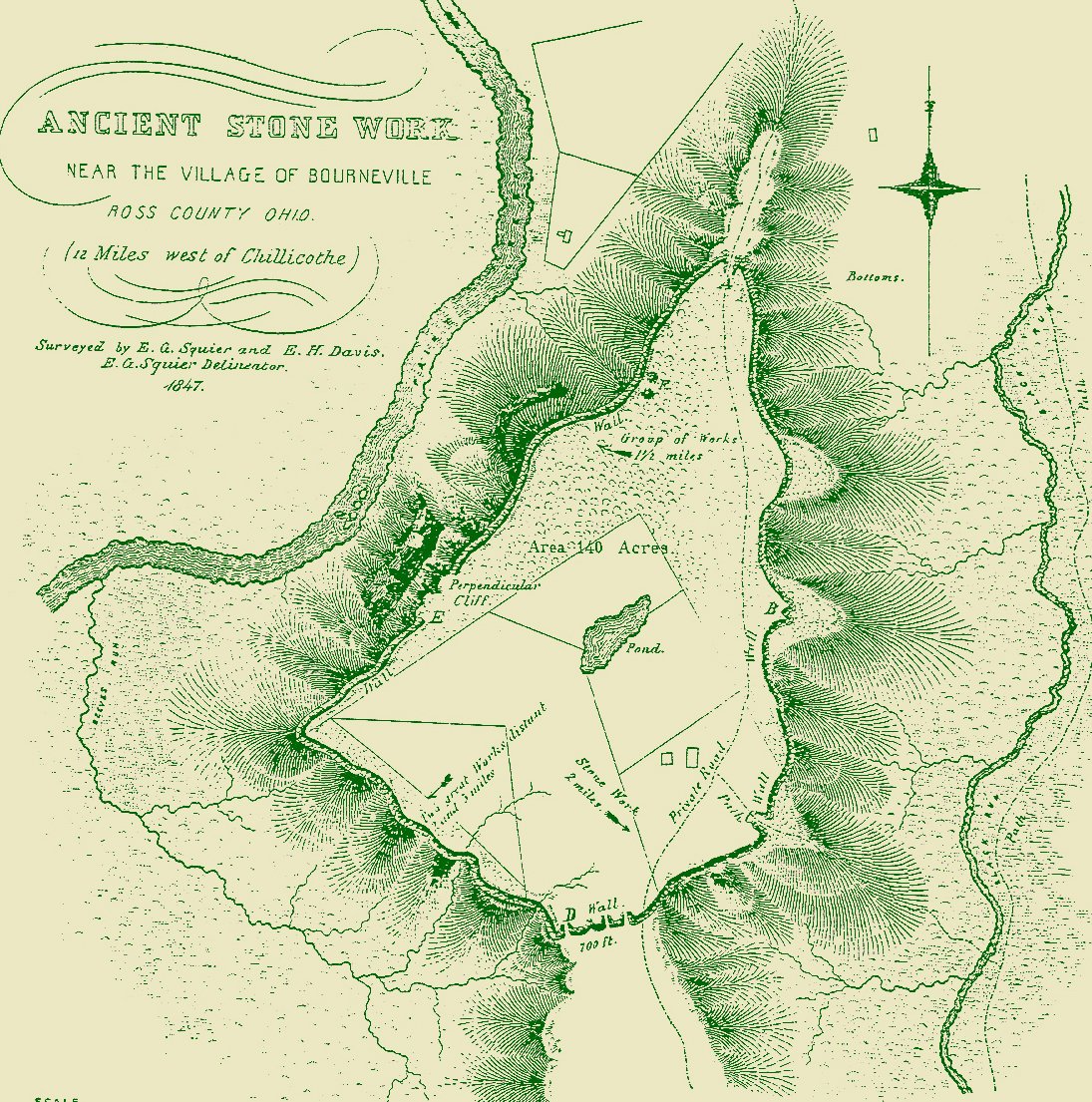
Squire.& Davis Map of Spruce Hill
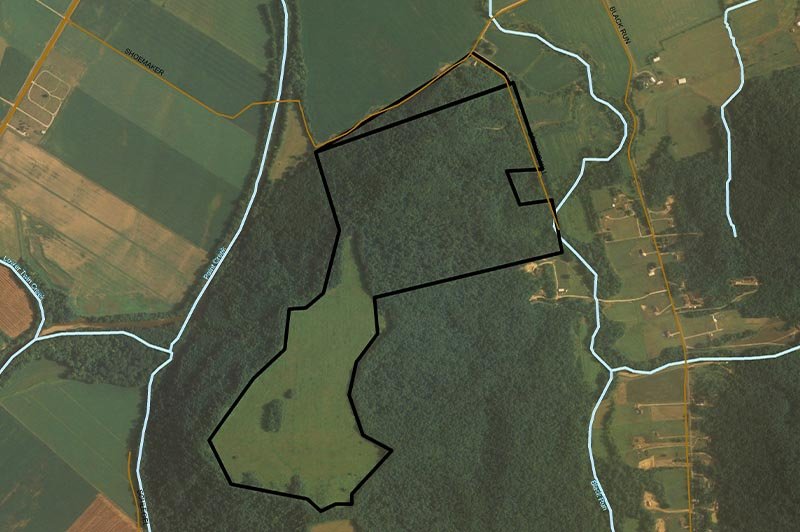
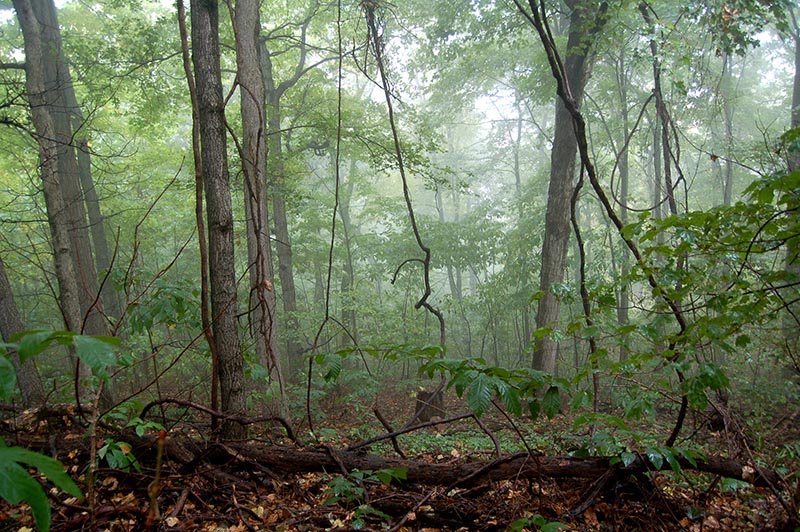
Spruce Hill is completely forested - Photo by Tim Pohlar
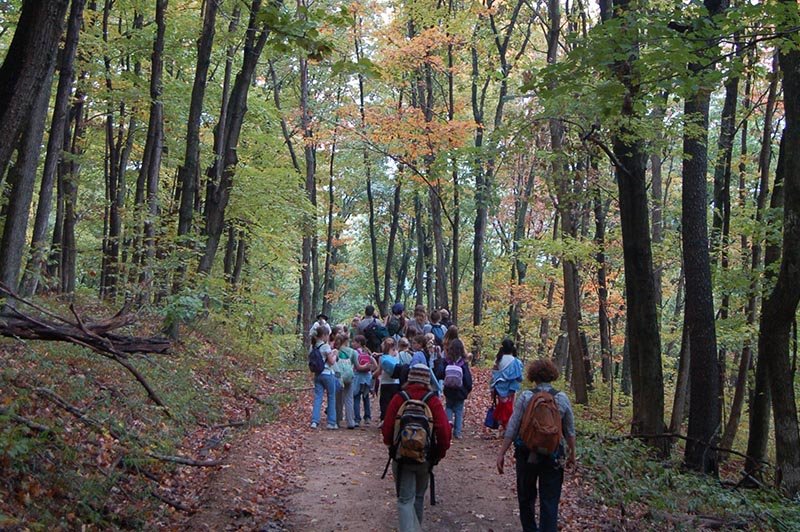
A pre-existing farm lane provides simple and primitive access to the preserve - photo by Tim Pohlar
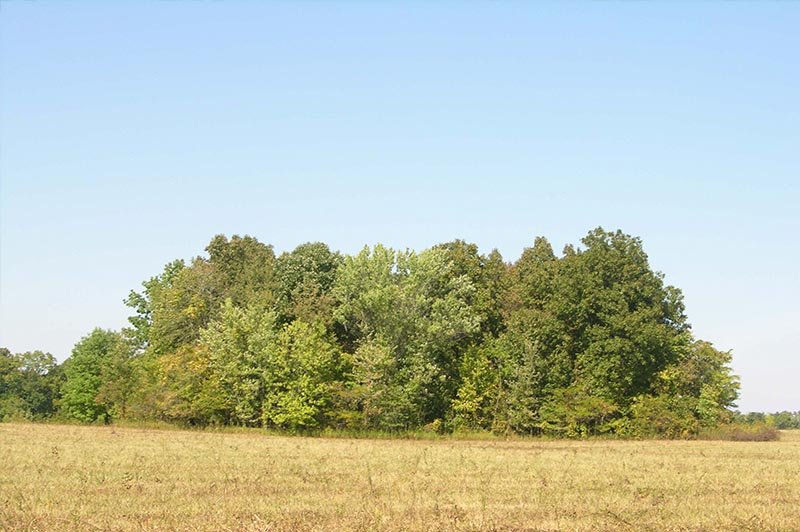
This little wetland island is an important spring breeding site for spring peepers, spotted salamanders, and wood frogs.
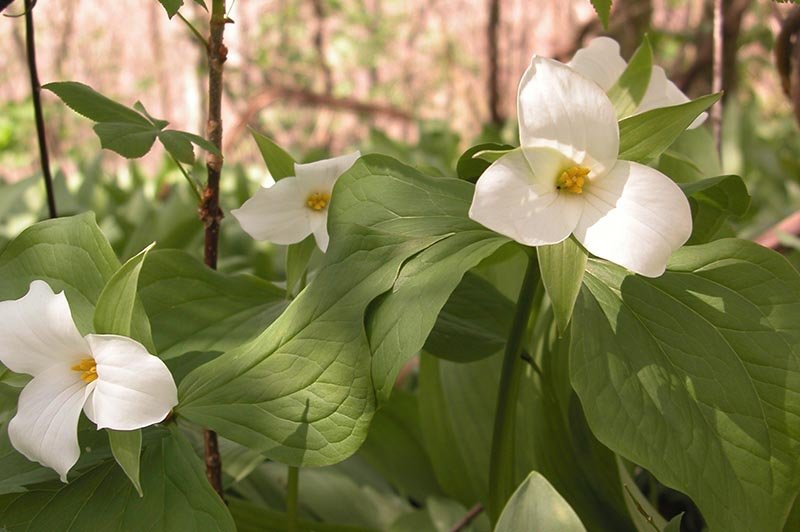
Large Flowered Trillium
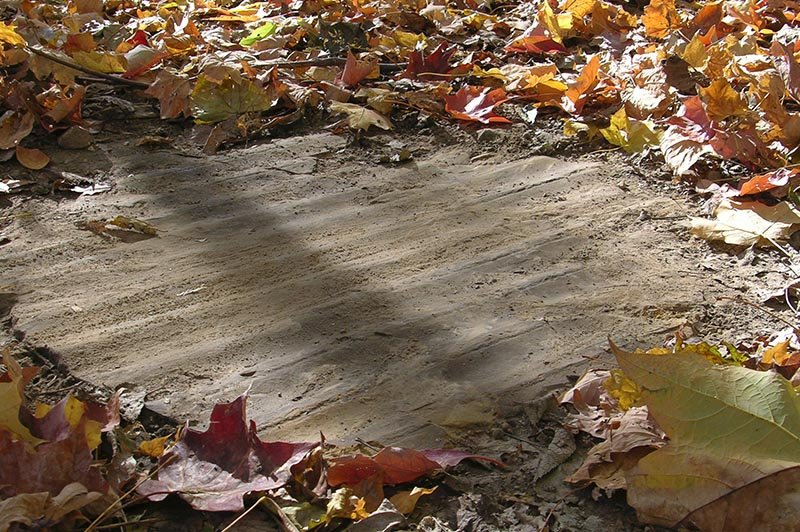
Rippled Sandstone along the path
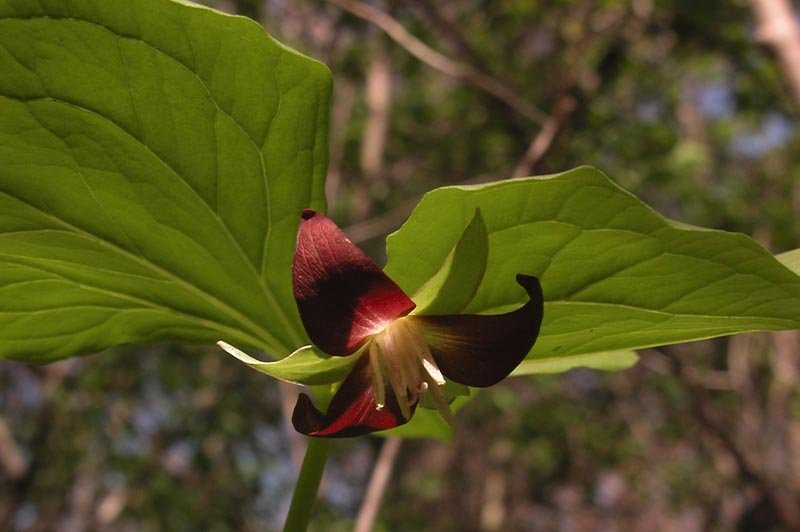
Drooping Trillium
Archaeological & natural significance: The outer rim of the hill known as Spruce Hill is outlined by a stone wall that was built 2,000 years ago by the Native American Hopewell Culture, demarcating what was surely ancient ceremonial space but is no longer visible. It is one of about a dozen hilltop enclosures found in Ohio, the most famous of which are Fort Hill and Fort Ancient. In addition to Spruce Hill, only two other hilltop enclosures were built solely with stone, as opposed to earthen materials. At 140 acres, Spruce is the largest Hopewell-era hilltop enclosure discovered to date, the wall alone stretching over 2.25 miles. This broad vista of Paint Creek’s wide floodplain as viewed from the top of the preserve’s bluffs and the hill’s flat mesa-like ridgetop is probably the reason why the Hopewell people chose this prominent ridge as the setting for one of their ceremonial grounds.
Adding to the mystery of how exactly Spruce Hill was used is evidence that very hot fires burned along the walls, so hot that the sandstone rocks melted and produced slag. About thirty spots along the walls include fused, glazed sandstone, vitrified soils, and/or burnt clay and cinders. No one knows if the walls were burned as an act of violence, or ceremonially, but most archaeologists favor the latter premise because clumps of baked clay have been found retaining the impressions of stacked logs, as if the wall may have been fueled with wood and then intentionally burned. If the fire was deliberately set at once, it certainly would have been a dramatic sight.
Ancient heartland of the Hopewell Culture: The Hopewell Culture is better known for its floodplain earthworks than its high-elevation enclosures. People of this culture built at least thirty-six complex earthworks on the floodplains – typically groups of carefully placed mounds surrounded by high earthen walls in the shape of perfect circles, squares, and other geometric shapes. Perhaps the most famous of these sacred landscapes are the vast earthwork complexes that once covered present-day Newark and Portsmouth. Spruce Hill’s upland enclosure sits high above two of these floodplain earthwork complexes: Baum Works and Seip Works, the latter protected by the National Park Service.
Spruce Hill, Baum, and Seip are part of the Hopewell Heartland, the epicenter of which lies in present day Chillicothe where the great waterways of the Paint and the Scioto find their confluence. Approximately two dozen ceremonial earthwork complexes once stood on the floodplains of Ross County – fully two thirds of all the major Hopewell earthworks ever constructed (and virtually all of them in Ohio). Ohio’s remnant earthworks offer a glimpse into the Hopewell Culture’s glorious 2,000-year old past and inspire awe and wonder in all who behold the grandeur of these ancient monuments.
Natural history: Spruce Hill is completely forested except for the flat ridgetop, which was previously a farm field and now provides meadow habitat. The preserve is renowned for its showy spring wildflowers which include three species of trilliums, celandine wood poppy, dwarf larkspur, and large colonies of wild leeks. It also boasts a high count of native plant species. The extremely steep banks of the hillside overlooking Paint Creek shelter small stands of hemlocks. On the ridgetop is a shallow pond that some speculate was once a deep reservoir for water constructed by people of the Hopewell Culture. If so, it is now mostly filled with organic debris and shaded by buttonbush, pin oak, and swamp white oak. This little wetlands island is an important spring breeding site for spring peepers, spotted salamanders, and wood frogs.
Preserve history: In 2008, the National Park Service staff at Hopewell Culture National Historical Park reached out to the Arc of Appalachia, asking if we could respond to the emergency of Spruce Hill being sold by auction. We said “Yes!” and jumped into action. With the help of Clean Ohio funding and emergency fund-raising from private donors, Spruce Hill was successfully purchased and is now saved as a perpetual natural area and historic site. The site is recognized by Congress as land worthy of national park designation. If fate had led Spruce Hill to become a National Park instead of a nonprofit preserve, Spruce Hill would probably be heading toward World Heritage Site designation today. Unquestionably, as an archaeological site, it has worldwide significance.


